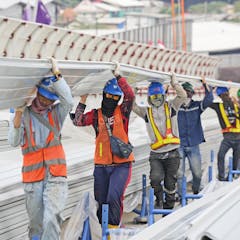
Articles on Workplace
Displaying 81 - 100 of 359 articles

Research shows that workers rarely call out unethical behavior or even just operational problems, in large part because they fear serious consequences.

A range of films spanning different eras confronts viewers with the same question: ‘What if all that hard work isn’t really worth it?’

It’s clear the current workplace health and safety framework isn’t stopping people from getting bullied. It’s time to treat bullying as a public health issue and address the problem more effectively.

Managers can play a key role in helping refugee employees thrive in their new workplaces, instead of robbing them of their autonomy.

Public support for unions is at a near 60-year high. Meanwhile, self-organizers at major American chains are spearheading a new movement to mobilize.

A new French research collective, Orelig, set out to answer the question.

Taking time off work is important, but many people don’t take their full holiday entitlement. Here’s how to make the most of time off

Gossip has a long history in forming social bonds, and can be an important part of the workplace.

Performance reviews were always a challenge, but even more so in the age of hybrid work, when some employees are in the office more often than others.

A regional director of the National Labor Relations Board has issued a complaint over instances of anti-union practices at Starbucks. And that was before the company’s boss threatened to withhold wages.

The majority of people who witness workplace bullying do nothing about it.

For Canadians hoping to emerge from the pandemic with better jobs, a stronger economy and reduced inequality, employee ownership combined with employee participation is a promising way to get there.

About 1 in 7 workers say their managers are abusive, whether it involves ridicule or a failure to provide credit when it’s due.

Racism in Australian workplaces often goes unaddressed. The Diversity Council Australia’s report provides some strategies to address these issues in workplaces.

While a workplace fatality is a great tragedy, an even greater tragedy is not learning from it.

Many employers are encouraging staff to return to workplaces after two years of working from home. For some, this means returning to racist work environments.

Two years of pandemic have put a severe strain on the mental health of America’s workers. Employers with a plan in place will be best equipped to help them cope.

The best way to help employees disconnect from work is to allow them the autonomy to choose for themselves how, when and where to disconnect.

A legal scholar explains what the ruling means for other vaccine mandates and the government’s ability to protect public health.

Businesses need to do more than just focus on head count.
